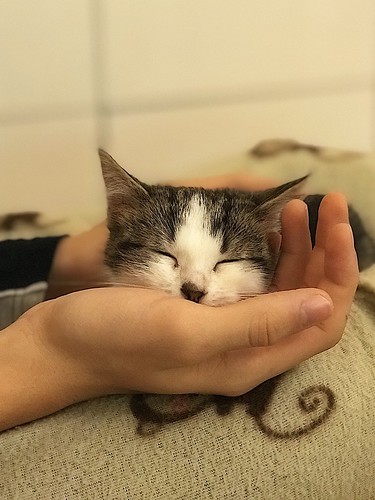Ary men and women, who enhanced their level of physical activity through a
Ary men and women, who increased their level of physical activity for the duration of a physical activity programme, are still often working out for at least six months following programme cessation. Really tiny qualitative study has been carried out to explore physical activity experiences of men and women following participation in cardiac rehabilitation. Two exceptions to this are studies by Fleury and colleagues [29] and Rogerson et al. [30]. Fleury et al. ([29] located intrapersonal barriers which include perceived physical situation, a lack of motivation and interest, and competing demands influenced cessation of physical activity following cardiac rehabilitation. Rogerson et al [30] found that facilitators of exercising following cardiac rehabilitation integrated having a reason for exercising, being able to determine the psychological added benefits of exercise and getting good social assistance [30]. Qualitative approaches are most effective suited to know and explore participant perceptions of well being and physical activity, and their decision to maintain standard workout within the long term. Exploring the perspectives of those that have created a  successful transition from cardiac rehabilitation completion to physical activity upkeep could also deliver valuable insight as to which theories of behaviour alter to adopt as a framework for future interventions. Qualitative approaches that happen to be, by nature, inductive or `bottomup’ in lieu of deductive or `top down’ are useful for unearthing how people change and eliciting the things that could foster behavioural adherence. Qualitative approaches may very well be regarded a Asiaticoside A chemical information starting point for considering the prospective mechanisms of alter and applied behaviour change procedures to adopt to facilitate behaviour alter [3]. The present study employed photoelicitation (autophotography) as the main kind of information collection. Photoelicitation is actually a qualitative analysis strategy that uses a photograph or drawing PubMed ID:https://www.ncbi.nlm.nih.gov/pubmed/25669486 to stimulate [32]. Autophotography involvesPLOS A single DOI:0.37journal.pone.03828 September 8,two Exploring Maintenance of Physical exercise following Cardiac Rehabilitationproviding a camera to the participant to choose photos that answer study driven questions and share with investigators. Autophotography can give an extra layer of insight into an individual’s life by enabling researchers to view the globe by means of the participant’s eyes, and in carrying out so delivers participants with a sense of agency and a voice. In addition, photographs “embody a way of seeing and may enable illuminate what individuals worth, what pictures they choose, how they make sense in the globe and how they conceive others” (p.68) [33,]. The prospective for using visual procedures with interviews has been gaining elevated interest [34, 35]. Photographs happen to be utilized in conjunction with interviews to stimulate enriched storytelling of healthrelated experiences including understanding selfmanagement in chronic illness [36] and the practical experience of homelessness [37]. In the context of physical activity, you will discover a handful of studies in which researchers have made use of photoelicitation as a indicates to understand the aspects influencing physical activity and health behaviour adjust [33, 38]. To our understanding, none have made use of autophotography to discover motives underlying healthbehaviour motivation and adherence following cardiac rehabilitation. The aim in the present study was to explore the variables that influence motivation and commitment to continued physical exercise following participation in a ca.
successful transition from cardiac rehabilitation completion to physical activity upkeep could also deliver valuable insight as to which theories of behaviour alter to adopt as a framework for future interventions. Qualitative approaches that happen to be, by nature, inductive or `bottomup’ in lieu of deductive or `top down’ are useful for unearthing how people change and eliciting the things that could foster behavioural adherence. Qualitative approaches may very well be regarded a Asiaticoside A chemical information starting point for considering the prospective mechanisms of alter and applied behaviour change procedures to adopt to facilitate behaviour alter [3]. The present study employed photoelicitation (autophotography) as the main kind of information collection. Photoelicitation is actually a qualitative analysis strategy that uses a photograph or drawing PubMed ID:https://www.ncbi.nlm.nih.gov/pubmed/25669486 to stimulate [32]. Autophotography involvesPLOS A single DOI:0.37journal.pone.03828 September 8,two Exploring Maintenance of Physical exercise following Cardiac Rehabilitationproviding a camera to the participant to choose photos that answer study driven questions and share with investigators. Autophotography can give an extra layer of insight into an individual’s life by enabling researchers to view the globe by means of the participant’s eyes, and in carrying out so delivers participants with a sense of agency and a voice. In addition, photographs “embody a way of seeing and may enable illuminate what individuals worth, what pictures they choose, how they make sense in the globe and how they conceive others” (p.68) [33,]. The prospective for using visual procedures with interviews has been gaining elevated interest [34, 35]. Photographs happen to be utilized in conjunction with interviews to stimulate enriched storytelling of healthrelated experiences including understanding selfmanagement in chronic illness [36] and the practical experience of homelessness [37]. In the context of physical activity, you will discover a handful of studies in which researchers have made use of photoelicitation as a indicates to understand the aspects influencing physical activity and health behaviour adjust [33, 38]. To our understanding, none have made use of autophotography to discover motives underlying healthbehaviour motivation and adherence following cardiac rehabilitation. The aim in the present study was to explore the variables that influence motivation and commitment to continued physical exercise following participation in a ca.